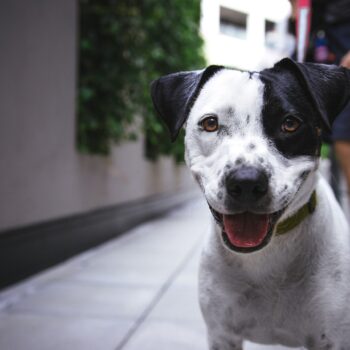Humane Rescue Alliance (HRA), the first regional, community-based, multi-state animal welfare organization in the nation, has been working on a number of initiatives as they transition toward a more community-centric model. On a recent COVID-19 weekly national call, Lisa LaFontaine, President and CEO of the Humane Rescue Alliance, shared four things that their industry-leading organization has been working on as of late. HRA is in the D.C. area, but these tips could be applied to any community across the country.
Partner with human services. HRA has been working to form partnerships with human services, one being human healthcare providers. They are working to co-locate some of Humane Rescue Alliance’s services at healthcare provider facilities. By partnering with human services, they are shifting their focus to find ways they can have long-term generational impact. LaFontaine says, “If we can co-locate with one of the really well-known human healthcare partners, we put this approach in place for a generation.” COVID-19 has shed light on a very important concept known as “One-Health” – a recognition that people, animals and the environment are inextricably linked. Building collaborations with human social services organizations advances the health and well-being of the entire community.
Consider expanding existing partnerships in your community in new and creative ways.
Form street teams. They’ve also been working to create street teams. “D.C. is a city of neighborhoods – we have eight wards, and a lot of neighborhood pride,” says LaFontaine. Street teams will be comprised of volunteers who can offer support in a variety of ways from reuniting lost pets, answering questions about foster care, etc.
Forming street teams is a great way to engage community members and volunteers while shifting to the community-centric shelter model, and this will empower the individuals to ‘be’ HRA in their own communities – another way we can meet people and pets where they are.
Find interns. Additionally, LaFontaine shares that they have been working with colleges in their city to find interns. “There are five colleges in the region that have social services programs, and we want to get social work interns to help us with the Human Animal Support Services (HASS) project,” she says.
Partnering with colleges and universities to find interns is a great way to have generational impact, and interns can be powerful brand ambassadors to share the great work of your organizations.
Create a new foster category. Their organization is developing a new foster category for people who may be facing a housing insecurity or escaping a violent situation. This foster category would provide those in need with an alternative to HRA’s established foster program, by finding a foster caregiver that is already in the person in need’s ecosystem. “We will use our foster training to help someone to become a foster, and that would be a way of either keeping the animal in the neighborhood or the family,” says LaFontaine. “Oftentimes something as simple as a crate, or other supplies we have on hand, can remove barriers to fostering a friend or family member’s pet.”
The Humane Rescue Alliance is a tier one shelter in the HASS project. Their work provides concrete examples of how HASS is striving to support humans and their companion animals to preserve the human-animal bond.
To learn more about Human Animal Support Services and how to get involved, visit their website. Interested in joining COVID-19 weekly national calls to connect with other animal shelter professionals and volunteers? Read our blog post to learn more!

